Dodgers Rookie of the Year winners, all 18 of them
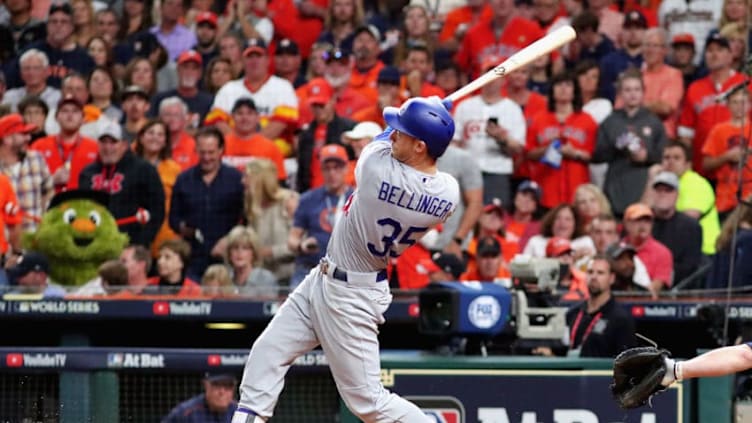
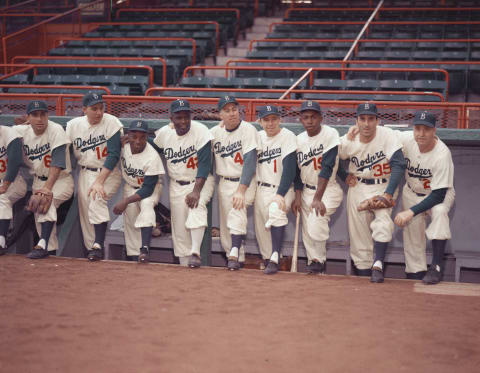
Dodgers Rookie of the Year awards is more than any other team. How do all 18 of the first-year award-winners rank?
The Dodgers are at it again. With Cody Bellinger winning the NL Rookie of the Year Award this year, the Dodgers Rookie of the Year nods now has 18 players who have been named top rookie since the award was first given out in 1947. That was Jackie Robinson’s landmark season and he was the first to win it (back when only one award was given out for both leagues).
Two years after Robinson broke the modern color barrier and was named baseball’s best rookie, the award was handed out to the best rookie from each league for the first time. The Dodgers’ Don Newcombe won it that year, Joe Black earned it in 1952, and Jim Gilliam brought home the trophy in 1953.
After winning four ROY trophies in the first seven years it was awarded, the Dodgers were shut out until 1960 when big Frank Howard got the nod. Five years later it was Jim Lefebvre’s turn and four years after that Ted Sizemore got his.
From 1979 to 1982, the Los Angeles Dodgers won four straight ROY Awards. Rick Sutcliffe started off this streak, followed by Steve Howe, Fernando Valenzuela, and Steve Sax. All four players contributed to the Dodgers’ World Series-winning 1981 team (Sax played in 31 regular season games but didn’t exhaust his rookie eligibility).
The next stretch of Dodgers dominance started with Eric Karros powering his way to the top rookie prize in 1992. Hall of Fame catcher Mike Piazza took the honors in 1993 and Raul Mondesi won the award in 1994, making it three straight.
The Dodgers weren’t done yet, though. Hideo Nomo came over from Japan to win the Rookie of the Year Award in 1995 and Todd Hollandsworth made it five straight when he won it in 1996.
After winning five in a row from 1992 to 1996, the Dodgers went two decades without the league’s best rookie until Corey Seager ended the drought last season. Now, once again, the Dodgers have gone back-to-back with Cody Bellinger winning the Rookie of the Year Award this year. That makes 18 winners.
So which of these players went on to have long, productive careers and which ones flamed out after their initial greatness? Here is a ranking of these 18 Dodgers Rookie of the Year awards based on career greatness.
For these rankings, I used a combination of Wins Above Replacement (WAR) from Fangraphs and Baseball-Reference, but made adjustments for other factors, like Joe Black and Don Newcombe getting late starts to their careers because of the segregation.
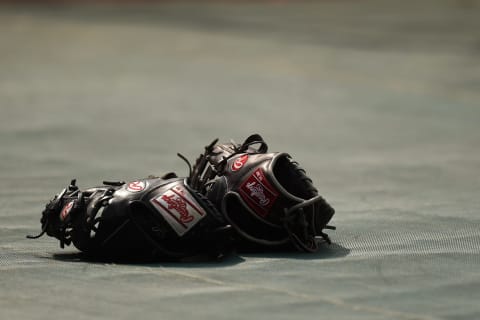
Dodgers Rookie of the Year #18
- RP Joe Black, 1952
- 6 seasons with three teams (4 seasons with Dodgers)
- 30-12, 414 IP, 3.91 ERA
- 2.6 fWAR, 5.0 bWAR
Joe Black was 28 years old during his first major league season with the Brooklyn Dodgers in 1952. He was an instant sensation, going 15-4 with a 2.15 ERA while pitching mostly in relief. He also had 15 saves to go along with his 15 wins.
In the World Series against the Yankees that fall, Black was pulled out of the bullpen to start three games. He had a very good 2.53 ERA but lost two of his three starts and the Dodgers lost the series in seven games.
Black was so good that year that he not only won the Rookie of the Year Award, he also finished third in the voting for NL MVP, behind Hank Sauer and Robin Roberts. He was a very deserving Rookie of the Year winner, but there were more valuable players who finished behind him in MVP voting, including Stan Musial and teammate Jackie Robinson.
Before playing with the Dodgers, Black spent seven seasons in the Negro Leagues, where he won two championships with the Baltimore Elite Giants. He also worked with Jackie Robinson to create a pension plan for Negro League players. When he joined the Dodgers five years after Robinson broke the modern color barrier, they became roommates.
His rookie season would end up being Black’s best year in the major leagues. After putting up a 2.15 ERA that season, he would have a 4.84 ERA over the rest of his career as he moved from the Dodgers to the Cincinnati Redlegs (as they were called during the “red scare”) and Washington Senators.
After his playing career ended, Black was a scout for a couple years with the senators, taught PE at Hubbard Junior High School in New Jersey, and was an executive with Greyhound. He appeared in one episode of The Cosby Show and spent many years working in baseball. According to this article from 2015, Black had a hand in the Marlins’ World Series victory over the Cleveland Indians in 1997.
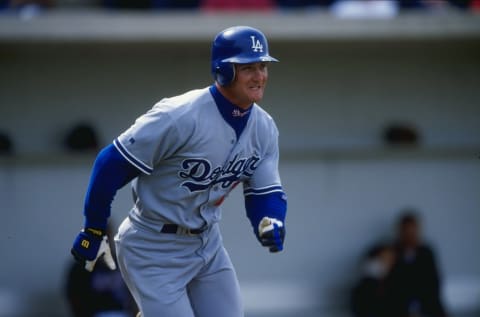
Dodgers Rookie of the Year #17
- OF Todd Hollandsworth, 1996
- 12 seasons with eight teams (6 seasons with Dodgers)
- .273/.328/.439, 97 wRC+, 3492 PA
- 5.2 fWAR, 6.5 bWAR
Hollandsworth won his Rookie of the Year Award before advanced metrics like Wins Above Replacement (WAR) were around. It was also a time when defense was mostly judged by the number of errors a player made, without much consideration for range.
In this context, Todd Hollandsworth took the honors with a 1.2-WAR season. For reference, 0 WAR is replacement-level and 2 WAR is average.
The year Hollandsworth won there were 12 other rookies in the NL, both hitters, and pitchers, who had at least 1.2 WAR. The two guys who should have been on the top of most ballots were the Expos’ F.P. Santangelo and the Marlins’ Edgar Renteria, both with 3.5 WAR. Hollandsworth was a better hitter than both, but his defense cut into his value.
One of the things Hollandsworth had going for him that year was playing time. He was third among NL rookies in plate appearances, behind Marvin Benard and Rey Ordonez. Getting that much playing time helped Hollandsworth accumulate the counting stats, like hits, runs, home runs, RBI, and stolen bases. He finished in the top three among NL rookies in all five categories.
Hollandsworth stayed with the Dodgers for another three-and-a-half year, but never got as much playing time as he did in 1996. In fact, he never again had 500 plate appearances in a season after his award-winning campaign.
He spent most of his career as an extra outfielder who rarely played against lefties (87 percent of his career plate appearances were against right-handed pitchers). He also made a memorable mistake when he forgot how many outs there were on a fly out to left and allowed Mark Grace to score from third base and Sammy Sosa to score from second.
As a part-time player who never had a season worth even 2 WAR, and had a few seasons below replacement-level, it’s surprising that Hollandsworth played 12 years in the major leagues. He must have been a good guy in the clubhouse.
He did have two very impressive small-sample size seasons. In 2001, he hit .368/.408/.667 in 125 plate appearances for the Colorado Rockies. A few years later, he hit .318/.392/.547 in 167 plate appearances for the Cubs. After his career ended, Hollandsworth moved up to the broadcast booth. He was the color commentator for the Miami Marlins last season.
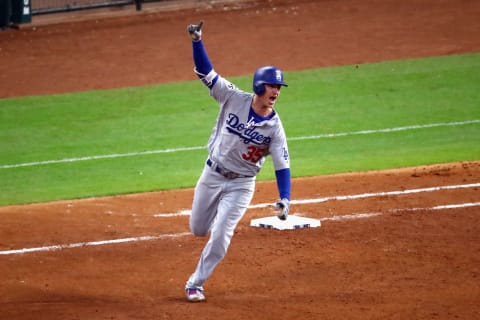
Dodgers Rookie of the Year #16
- 1B Cody Bellinger, 2017
- 1 seasons with Dodgers
- .267/.352/.581, 138 wRC+, 548 PA
- 4.0 fWAR, 4.2 bWAR
Since Bellinger just won the ROY award, it’s hard to know where to put him on this list. He was very good, though, so it feels like he should be higher than Joe Black, who really only had one good year, or Todd Hollandsworth, who spent a dozen seasons in the big league generally being a bit above replacement level. For now, Bellinger gets this spot.
Before exploding on the scene with a record-setting rookie season, Bellinger was a top-100 prospect for Baseball America in each of the last two offseasons. He hit 30 homers in High-A in 2015, 26 across two levels of the minor leagues in 2016, and an NL-record 39 for the Dodgers this year.
Bellinger set the NL rookie record for homers even though he didn’t begin the season with the Dodgers. He started the year with Oklahoma City in the PSL, where he hit .343/.429/.627, with five home runs in his first 18 games.
It was expected that he would spend a few months in Triple-A before getting to the bigs, but an injury to Joc Pederson and poor hitting by Adrian Gonzalez prompted the Dodgers to call him up
Once he arrived in the show, Bellinger lit the league on fire with a ridiculous nine home runs in his first 24 games and 24 home runs in his first 57 games. By the end of the year, he had 39 long balls, breaking the previous Dodgers rookie record of 35 set by Mike Piazza in 1993. His 97 RBI were the third most ever by a Dodgers rookie.
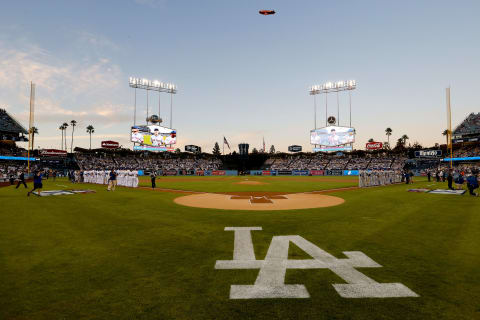
Dodgers Rookie of the Year #15
- RP Steve Howe, 1980
- 12 seasons with four teams (5 seasons with Dodgers)
- 47-41, 606 IP, 3.03 ERA
- 10.0 fWAR, 10.5 bWAR
Howe had an impressive start to his career. He won the NL Rookie of the Year Award in 1980, got the save in the clinching game of the Dodgers’ 1981 World Series victory, made his only All-Star team in 1982, then had a 1.44 ERA in 68.7 innings in 1983. After four big league seasons, he had 56 saves and a 2.17 ERA in 135 career games.
Behind the scenes, though, Howe had a drug addiction that would resurface on a regular basis for the rest of his life. His first attempt at beating his addiction came before the 1983 season when he checked into a substance abuse clinic, but a relapse led to Howe going back into rehab in late May.
At the time, he was fined by the Dodgers and placed on three years probation by MLB commissioner Bowie Kuhn.
He rejoined the team in late June. When he showed up late for a game, the team suspended him and he had to take another drug test. This one he passed, so he was reinstated. He pitched well down the stretch, but when he missed a team flight he was suspended again.
In the offseason, Howe was one of four players suspended by Kuhn (along with Willie Wilson, Willie Aikens, and Jerry Martin). All four players filed grievances. The other three had their suspensions shortened and returned on May 15, but Howe missed the entire 1984 season.
This was just the beginning. The Dodgers gave him another chance in 1985, but he only lasted until July before being released. He was signed by the Twins in August but released again in September when he admitted that he’d relapsed.
He didn’t pitch in the major leagues in 1986 but got another chance with the Texas Rangers in the summer of 1987. They released him after he missed a mandatory offseason workout in January. This time it was alcohol that was the problem.
His hiatus from the big leagues was longer this time. He didn’t pitch for any major league team in 1988, 1989, or 1990. The Yankees gave him a workout in spring training of the 1991 season and Howe still showed the ability that made him the Rookie of the Year back in the day. He stuff was good enough to post a 1.68 ERA in 37 games.
Howe’s success led to a one-year, $600K deal, but it didn’t take long until he got into trouble with drugs again. Shortly after Christmas, he was charged with cocaine possession at his home in Minnesota. The charges were later reduced to a misdemeanor.
In the meantime, Howe was pitching well for the Yankees right up until commissioner Fay Vincent banned him for life that July.
The ban didn’t stick. Arbitration led to Howe’s reinstatement and he was back with the Yankees in 1993, with the provision that he could be drug tested every other day. He ended up pitching six years with the Yankees and had a 3.57 ERA in 229 games, but poor pitching and rumors that he was distributing amphetamines to teammates led to his release in 1996.
Ten years after his major league career ended, the 48-year-old Howe was killed when he was ejected from his pickup truck during a rollover accident. Toxicology reports showed he had methamphetamine in his system.
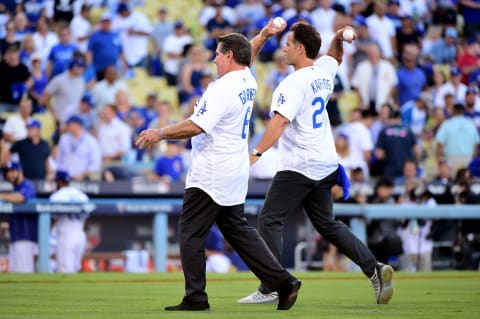
Dodgers Rookie of the Year # 14
- 1B Eric Karros, 1992
- 14 seasons with three teams (12 seasons with Dodgers)
- .268/.325/.454, 108 wRC+, 7100 PA
- 17.8 fWAR, 10.2 bWAR
Karros is another Dodgers Rookie of the Year winner, like Hollandsworth, who would likely not fare so well in the voting if he played today. He had the shiny home run and RBI numbers that voters looked for 25 years ago. He hit 20 big flies and had 88 steaks, but they came with a .304 OBP and below average defense at first base. By Total Zone, he was the worst-fielding first baseman in the National League.
Based on Fangraphs WAR, there were six rookie pitchers and three rookie hitters who were more valuable than Karros in 1992. The two guys who should have battled for the honor were the Reds’ Reggie Sanders and the Expos’ Moises Alou and both were on teams with better records than the 63-99 Dodgers. Home runs and RBI went a long way in award voting in those days.
Karros followed up his ROY season with a 23-homer, 80-RBI year that was even less valuable than the year before. He may have hit 23 home runs, but his .247/.287/.409 batting line made him a below average hitter and his defense was again terrible.
It wasn’t until 1995 that Karros actually had a good season (.298/.369/.535, 4.5 WAR). This was the first of a five-year stretch in which he provided good production to the team, although his 1997 season wasn’t as good as the surrounding years.
One of the very fortunate things about Karros’ career was the time in which he played, which was right during the height of a high-offense era. He hit 30 or more home runs five times and drove in 100 or more runs five times.
This sounds impressive, but it must be remembered how many home runs were hit and how many runs were scored during this time. There was 19 first baseman with 5000 or more plate appearances during Karros’ career (1992 to 2004) and Karros ranks 16th in WAR.
After spending 12 seasons with the Dodgers, Karros played one season with the Cubs and a final season with the A’s. He went into broadcasting after his career ended and is currently doing color commentary for Fox, often paired with Thom Brennaman.

Dodgers Rookie of the Year #13
- 2B Ted Sizemore, 1969
- 12 seasons with five teams (3 seasons with Dodgers)
- .262/.325/.321, 81 wRC+, 5648 PA
- 13.6 fWAR, 16.0 bWAR
Sizemore started his rookie year at shortstop, but when Jim Lefebvre struggled at the dish and the team acquired Maury Wills, Sizemore moved to second base to replace Lefebvre as the starter. He played 159 games that year and hit .271/.328/.342, which earned him 14 first-place votes out of 24 cast.
The following season started slowly for Sizemore and got worse when he ruptured a thigh muscle in June. After missing nearly two months, he came back and hit better than he had before. His final batting line was .306/.367/.350. It would be the only time in his career he hit over .300 and that .367 OBP would be the highest of his career.
Then, just like that, Sizemore was traded to the St. Louis Cardinals in a deal that brought the enigmatic Dick Allen to L.A. He played three years with the Cardinals, including the 1974 season when leadoff man Lou Brock stole a record 118 bases. Brock credited Sizemore for his patience in the number two spot in the lineup.
As he aged into his 30s, Sizemore moved around a bit. He returned to the Dodgers for one year in 1975, then played with the Phillies, Cubs, and Red Sox over the last five years of his career. In retirement, he worked as the chief liaison with major league players for the baseball glove company Rawlings.
Sizemore is currently the CEO of the Baseball Assistance Team, which is a non-profit organization dedicated to helping former players with financial and medical problems. The organization provides aid to former Major League, Minor League, and Negro League players, along with scouts, umpires, and office personnel.
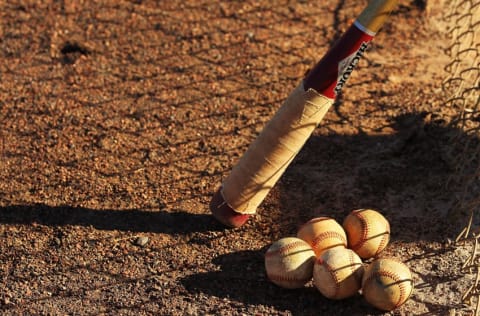
Dodgers Rookie of the Year #12
- 2B Jim Lefebvre, 1965
- 8 seasons with Dodgers
- .251/.323/.378, 104 wRC+, 3417 PA
- 17.4 fWAR, 17.1 bWAR
When Jim Lefebvre won the Rookie of the Year Award in 1965, there was another first-year NL second baseman who finished second in the voting. Here were their statistics:
- 631 PA, 57 R, 12 HR, 69 RBI, 3 SB, .250/.337/.369—Lefebvre
- 708 PA, 100 R, 14 HR, 40 RBI, 20 SB, .271/.373/.418—Other Guy
Lefebvre was on the pennant-winning Dodgers, who went 97-65. The other guy was on the ninth-place Houston Astros, who went 65-97 and finished 32 games behind the Dodgers (only the Mets were worse). Still, unless the voters REALLY valued RBI over, literally, everything else, there’s no way Jim Lefebvre should have won the Rookie of the Year Award over Joe Morgan.
The 1965 season was good for Lefebvre but 1966 was even better. He doubled his home run total and had more hits, runs, and RBI. He increased his WAR from 4.0 to 5.1. It was an impressive start to a career, but he wouldn’t be able to maintain this level of success.
Lefebvre played six more seasons but never came close to the production of his first two. He had a couple of above-average seasons, along with four seasons between average and replacement-level. His final year in the big leagues was in 1970 when he played 70 games and hit .201/.271/.337.
Rather than hang up his spikes for good, Lefebvre headed over to Japan to play for the Lotte Orions. He hit 29 home runs in his first year overseas, which was more than he hit in any season in the states. In 1974, his Orions team won the Japan Series, making Lefebvre the first player to win titles in Japan and the U.S.
Off the field, Lefebvre appeared on Gilligan’s Island and in two episodes of Batman in 1967. In the 1980s, he appeared on more television shows, including M*A*S*H, Alice, St. Elsewhere, and Knight Rider. He was also coaching baseball at this time, moving between a few organizations.
In 1989, Lefebvre was hired to manage the Seattle Mariners the offseason before Ken Griffey, Jr.’s rookie year. He was an enthusiastic presence who delivered daily motivational messages and handed out t-shirts to the players that read: “I’m a Lefebvre Believer.”
The Mariners improved each year he was in Seattle. When they went 83-79 in 1991, it was the first time in team history they finished above .500. They also set a record for attendance at the time. Despite this success, Lefebvre was fired shortly after the season ended. He went on to manage the Cubs in 1992 and 1993 and a partial season with the Brewers in 1999.
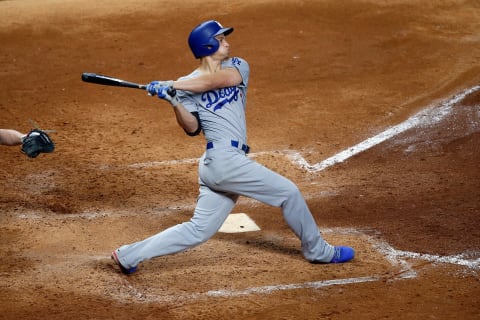
Dodgers Rookie of the Year #11
- SS Cory Seager
- 3 seasons with Dodgers
- .305/.374/.502, 135 wRC+, 1413 PA
- 14.6 fWAR, 13.5 bWAR
Seager had a delicious cup of coffee with the Dodgers in a 27-game stint in 2015 when he hit .337/.425/.561. He didn’t exhaust his rookie eligibility that year, so when he hit .308/.365/.512, with 105 runs scored and 26 home runs in 2016, he was a shoe-in for Rookie of the Year. He was also an All-Star, a Silver Slugger winner, and finished third in MVP voting. Not many players have better debut seasons than Corey Seager.
He was an All-Star and Silver Slugger again this year even though he didn’t put up the numbers he had in 2016. An elbow injury caused him to miss time down the stretch and a back sprain sidelined him for the NLCS. He did play all seven games of the World Series but only hit .222/.290/.370.
Francisco Lindor and Carlos Correa get plenty of much-deserved recognition for being very good young shortstops, but Seager has been better than both over the last two seasons. All three are still younger than 25. They make an impressive trio of young shortstops that baseball fans are fortunate to be able to see play on a regular basis.
If you’re questioning Seager’s #11 ranking on this list, consider that he’s only played two full seasons and a portion of a third, but he’s already been named to more All-Star teams than any of the guys ranked 12th to 18th. His Rookie of the Year season was also better than any season any of those guys had in their careers.

Dodgers Rookie of the Year #10
- 2B Steve Sax, 1982
- 14 seasons with four teams (8 seasons with Dodgers)
- .281/.335/.338, 97 wRC+, 7632 PA
- 22.6 fWAR, 25.3 bWAR
When Sax won the Rookie of the Year Award in 1982, he was one of three rookie second basemen who had good seasons. Consider the trio:
- 699 PA, 88 R, 4 HR, 47 RBI, 49 SB, .282/.335/.359—Steve Sax
- 702 PA, 79 R, 7 HR, 63 RBI, 16 SB, .281/.318/.382—Johnny Ray
- 687 PA, 103 R, 7 HR, 54 RBI, 32 SB, .271/.312/.372—Ryne Sandberg
Sandberg led the three in runs scored and tied with Ray in home runs. Ray had the most RBI and the highest slugging percentage. Sax stole the most bases and had the best on-base percentage. When it comes to WAR, there was disagreement between Fangraphs and Baseball-Reference:
- 3.4 fWAR, 3.3 bWAR—Steve Sax
- 3.6 fWAR, 3.8 bWAR—Johnny Ray
- 2.2 fWAR, 3.1 bWAR—Ryne Sandberg
It could be argued that Ray had the best year, then Sax, then Sandberg. Ray also had very close to the same career value as Sax. Of course, Sandberg ended up being much better than the other two and is in the Hall of Fame.
Sax was an All-Star in his rookie year and again the next year. In his eight seasons with the Dodgers, he stole 40 or more bases four times. He also once led the league in caught stealing, when he was nabbed 30 times in 1983. Incredibly, he made 30 errors that year, many of them throwing errors. This was the beginning of Steve Sax Syndrome.
It started on a relay play at the plate when Sax short-hopped a throw home that allowed the runner to score. It was replayed on the news that night and got in Sax’s head.
Soon he was throwing balls into the first base stands on easy grounders to second. Opposing fans taunted him by wearing batting helmets and holding bed sheets decorated with bullseyes.
Sax credits a visit with his ailing father in the hospital for curing his throwing ills. His father confessed he had once had the same problem and one day it just went away. Shortly after their visit, Sax’s father died.
Sax struggled with his throws for much of the rest of the season but finished the year with 36 straight errorless games and his Steve Sax Syndrome was gone. His mother later revealed that Sax’s father had never had a throwing problem.
After eight seasons with the Dodgers that included two World Series titles, Sax played for the Yankees, White Sox, and A’s over the last six years of his career. In the 1990s, he appeared on a handful of television shows, including the famous “Homer at the Bat” episode of The Simpsons.

Dodgers Rookie of the Year #9
- OF Raul Mondesi, 1994
- 13 seasons with seven teams (7 seasons with Dodgers)
- .273/.331/.485, 112 wRC+, 6369 PA
- 26.5 fWAR, 29.4 bWAR
Mondesi played in 42 games in 1993 but didn’t have enough plate appearances to qualify for the batting titles, so his Rookie of the Year season was the strike-shortened 1994 campaign. He hit .306/.333/.516, with 16 home runs in 112 games that year and beat out Ryan Klesko, Cliff Floyd, and Javy Lopez, among others, for the best rookie honors.
After bursting upon the scene in 1994, Mondesi had his best three seasons over the next three years. During this stretch, he was a 4-5 WAR player. He was an All-Star and Gold Glove winner in 1995 and a 30-30 guy in 1997 and 1999. He also won a second Gold Glove in 1997 and became known for his strong arm in right field.
During his final two seasons with the Dodgers, he was closer to a league average player. The Dodgers traded him to the Blue Jays after the 1999 season and received Shawn Green in return. An injury limited him to 96 games with the Blue Jays in his first year up north, but he still hit 24 home runs in that abbreviated season.
He followed that with a 27-homer season in 2001. This was a high-offense era, so hitting 20-something home runs were nice, but not All-Star material.
The last few years of Mondesi’s career were vagabond years. He went from the Blue Jays to the Yankees to the Pirates of the Angels to the Braves. He occasionally showed flashes of brilliance but was also a headache at times.
The year after his career ended, Mondesi was elected to the Chamber of Deputies in the Dominican Republic. In 2010, he became mayor of his hometown, San Cristobal, and held the position for six years, but eventually left office and was charged with corruption and mishandling of public funds. He was convicted and sentenced to eight years in prison earlier this year.
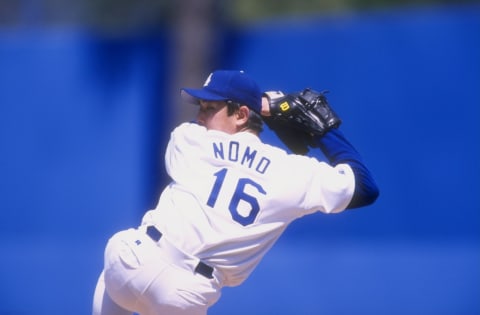
Dodgers Rookie of the Year #8
- SP Hideo Nomo, 1995
- 12 seasons with seven teams (7 seasons with Dodgers)
- 123-109, 1976.3 IP, 4.24 ERA
- 27.3 fWAR, 21.8 bWAR
After pitching for the Kintetsu Buffaloes in the Japan Pacific League for five years, Hideo Nomo came to the states in 1995 and “Nomomania” was born. He was 13-6, with a 2.54 ERA and 236 strikeouts in 191.3 innings in his first year, winning the Rookie of the Year Award over Chipper Jones, who finished second.
On July 11, 1995, Nomo started the All-Star game for the National League and was terrific. He used his twisting, winding motion to baffle AL hitters for two scoreless innings, which included three strikeouts. This would be the only All-Star team he would appear in, but it was a memorable appearance.
In a September issue of the L.A. Times, writer Mike Downey wrote about the origin of “Nomomania,” which he admits he stole from the “Fernandomania” phenomenon more than a dozen years earlier. This is how he described “Nomomania:”
“It is a craze, a cult, a fad that makes an individual all the rage. It is, by way of example, whenever Hideo Nomo pitches a game of baseball, people pay for the privilege of witnessing him in double or treble the numbers that another pitcher would ordinarily lure to the gate. Understand? Nomo excitement! Nomo fever! Nomo mania! Like the Beatles.”
Nomo came along the year after the 1994 strike that resulted in the first season in 90 years without a World Series at the end. The strike and continued friction the following year meant the 1995 season would be shortened to 144 games. Nomo was the perfect antidote. It wasn’t only Dodgers fans who loved him, it was all of baseball.
Along with the Rookie of the Year Award in 1995, Nomo finished fourth in Cy Young voting. He was nearly as good the next year when he went 16-11 with a 3.19 ERA and 234 strikeouts in 228.3 innings. He finished fourth in Cy Young voting once again.
Unfortunately, Nomomania didn’t last. His first two seasons were his best two seasons. He was traded to the Mets in July of 1988 and released by the Mets the following March. He struggled with walks and home runs. He pitched for the Brewers, Tigers, and Red Sox from 1999 to 2001 and had a 4.59 ERA.
The Red Sox allowed Nomo to become a free agent after the 2001 season and the Dodgers came calling. It was a very nice reunion for the first two years. Nomo was 32-19, with a 3.24 ERA in 438.7 innings across two seasons. It was just like old times. Who says you can’t get back together with an old flame?
It would have been a happy ending if the book closed after the 2003 season, but happy endings only exist in movies. Nomo started 18 games for the 2004 Dodgers and went 4-11 with an 8.25 ERA in 84 innings. He pitched the 2005 season with the Tampa Bay Devil Rays and had a 7.24 ERA in 100.7 innings. After two seasons away from the big leagues, Nomo pitched in three games with the Royals in 2008 before finally calling it quits.
Nomo’s career ended poorly but his overall success led to many more Japanese players coming to the states. He is one of only five players to have pitched a no-hitter in both leagues and the only pitcher to throw a no-hitter at Coors Field. He was elected to the Japanese Baseball Hall of Fame in 2014
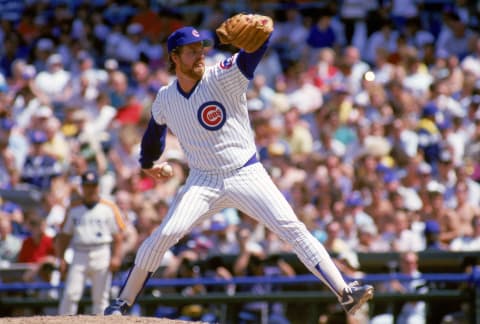
Dodgers Rookie of the Year #7
- SP Rick Sutcliffe, 1979
- 18 seasons with five teams (5 seasons with Dodgers)
- 171-139, 2697.7 IP, 4.08 ERA
- 33.2 fWAR, 34.3 bWAR
Imagine a 23-year-old rookie pitching 242 innings in 2017. It’s unfathomable to even consider because it would never happen today. The most innings pitched by a rookie pitcher this year was 163.7, by Ty Blach.
The last rookie to pitch 200 innings in a season was Daisuke Matsuzaka in 2007 and he wasn’t a typical rookie. Yet, Rick Sutcliffe pitched 242 innings and had five complete games as a rookie in 1979.
Of course, Sutcliffe followed up his award-winning, 3.46 ERA, 242-inning season with a 5.56 ERA in 110 innings in 1980. He then pitched just 47 innings in the strike-shortened 1981 season and was left off the roster for the World Series. After the season, he was traded to Cleveland.
Over the rest of his career, Sutcliffe mixed in stretches of workhorse-like pitching with abbreviated seasons. From 1982 to 1989, he had six seasons with 215 or more innings, including a back-to-back season with 240-plus. He also had two seasons right in the middle in which he pitched 130 and 176.7 innings.
The 1984 season is Sutcliffe’s most famous. He started the year with Cleveland, but was traded to the Cubs on June 13 and ran off a terrific stretch of pitching in which he was 16-1 with a 2.69 ERA in 20 starts.
That season helped propel the Cubs to their first postseason appearance in nearly 40 years. It also earned Sutcliffe the NL Cy Young Award and a fourth-place finish in NL MVP voting. The Cubs lost to the Padres in the NLCS, but Sutcliffe had a big moment when he hit a home run at Wrigley Field in Game 1.
Sutcliffe won 171 games with a 4.08 ERA in his career. Many years, he was a more mid-rotation starter than an ace, but he had some very good moments along the way. After his playing days were over, he spent a couple seasons as a minor league pitching coach and many years in the broadcast booth, where he had some embarrassing moments.

Dodgers Rookie of the Year #6
- 2B Jim Gilliam, 1953
- 14 seasons with Dodgers
- .265/.360/.355, 98 wRC+, 8321 PA
- 32.7 fWAR, 40.7 bWAR
When Gilliam had a chance at big league play during his rookie season, the Dodgers already had a set infield. To make room for Gilliam, Jackie Robinson was moved from second base to third base, which meant veteran Billy Cox was the odd man out. Cox was a popular player among his teammates and the fans, so this was not an easy situation for Gilliam to come into.
There was an added element of racism. Some people were concerned that the Dodgers could field five African-American players out of the nine men on the field on days when Don Newcombe pitched. Despite all of the controversy surrounding him, Gilliam had a terrific rookie year.
Batting almost exclusively at the top of the lineup, Gilliam led the league in plate appearances and triples. He had a .383 OBP and scored 125 runs. The Dodgers won 105 games, which is still a franchise record. It was an impressive year all around in Brooklyn.
When it comes to the Rookie of the Year Award, Gilliam was the best rookie position player, but rookie pitcher Harvey Haddix of the Pirates was more valuable. He was 20-9 with a 3.06 ERA in 253 innings.
The Pirates went 50-104 that year, finishing 55 games behind the Dodgers. Remove Haddix’ 20-9 record from the team totals and they were 30-95 in games in which he didn’t earn a decision. He really should have won the ROY that season.
A few years into his career, a pattern emerged during Dodgers spring training. Gilliam was always rumored to be challenged for a starting position or being a possible trade candidate. Despite this, other players came and went and Gilliam just did his job. He never was traded and continued to play 90 percent of the team’s games every year until he was 35 years old.
Gilliams was considered a very intelligent ballplayer who was able to do the little things that help a team win. Bill James designed a proxy number for Baseball IQ, which he called “Player Performance Index.” It incorporated batting, running, and defense to determine “percentage players.” Gilliam is third all-time in Bill James’ PPI, behind Joe Morgan and Max Bishop.
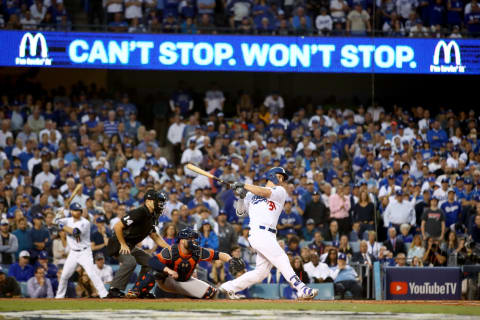
Dodgers Rookie of the Year #5
- OF Frank Howard, 1960
- 16 seasons with three teams (7 seasons with Dodgers)
- .273/.352/.499, 140 wRC+, 7352 PA
- 38.7 fWAR, 37.6 bWAR
Big Frank Howard, all 6-foot-7 and 255 pounds of him, had a couple of short stints with the Dodgers in 1958 and 1959 but spent most of those years terrorizing minor league pitchers and infielders with rocket shots off his mammoth bat. He hit a combined 80 home runs in those two minor league seasons. Despite that success, he was back in Triple-A at the beginning of the 1960 season.
“Hondo” joined the Dodgers in May. Despite giving his teammates a one-month head start, he still led the team in home runs and was second on the team in RBI. It was a nice debut for the big man. Unfortunately, his sophomore season did not go as well, mainly because of a chipped bone in his thumb that limited him to 72 games.
Howard had his first 30-homer season in 1962, which coincided with the most playing time he had in a season with the Dodgers. He could do one thing exceptionally well in baseball—hit for power. He wasn’t adept at fielding or running the bases.
The Dodgers played in a park that favored pitchers during an era that favored pitchers, which contributed to Howard not being a full-time player. The team felt they were better off trying to win with pitching in defense. After the 1964 season, they traded him to the Washington Senators.
The large human came into his own with the Senators in the late 60s. Before the 1967 season, he worked with Gil Hodges on his swing. Hodges wanted more of an uppercut, rather than Howard’s level swing. The result was 36 homers in 1967 and 44 in 1968.
Before the 1969 season, the Senators made Ted Williams their manager and Williams worked with Howard in spring training.
His goal was to make Howard a more patient hitter after the big man had walked just 54 times the previous season. Williams routinely walked 100 or more times when he was a player.
In his first year working with Williams, Howard hit 48 home runs. He also upped his walks from 54 to 102 and cut down his strikeouts from 141 to 96. The next season, he led the league in homers, RBI, and walks. Those were the only two seasons of his career in which he had an on-base percentage over .400.
The end came quickly for Howard’s career. He showed up to spring training before the 1971 season weighing close to 300 pounds and his production fell off. The Senators moved to Texas before the next season and Howard went with them.
He got the first hit in Arlington Stadium and it was, appropriately, a long fly ball to center field for a home run. It was a nice start, but he would only hit 10 home runs in 109 games that year. The Rangers sold him to Detroit in August and he played one final year in the Motor City in 1973.
Howard coached with various major league organizations for many years after his playing career ended. He was a big man, but a very kind man.
When the Montreal Expos moved to Washington and became the Nationals, Howard was a living reminder of the previous Washington baseball franchise. Three statues sit in center field plaza at Nationals Park—Walter Johnson, Josh Gibson, and Frank Howard.
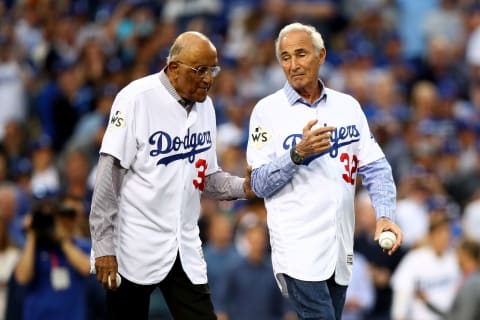
Dodgers Rookie of the Year #4
- SP Don Newcombe, 1949
- 10 seasons with three teams (8 seasons with Dodgers)
- 149-90, 2154.7 IP, 3.56 ERA
- 35.9 fWAR, 38.6 bWAR
Before making his major league debut in 1949, Newcombe pitched two seasons as a teenager in the Negro Leagues and two more seasons in the Dodgers’ minor league system.
In fact, Big Newk was in the Dodgers minor league system the year before Jackie Robinson broke the modern color barrier in the big leagues. He pitched for the Nashua Dodgers in the New England League in 1946.
He joined a Dodgers team that had Jackie Robinson at second base and Roy Campanella at catcher and he became one of the team’s top pitchers right from the start. In his rookie year, he was 17-8 with a 3.17 ERA in 244.3 innings.
He received 21 of the 24 first-place votes for the Rookie of the Year Award because three voters somehow voted for the Boston Braves’ Del Crandall, who only played in 67 games and hit .263/.291/.368.
Newcombe continued to pitch well over the next two seasons. He was an All-Star in each of his first three years while averaging 19 wins and 261 innings per season. Then, right in the prime of his career, he missed two seasons because of the Korean War. He returned in 1954 but struggled to a 9-8, 4.55 ERA season.
That down season was just temporary for Newk. He came back strong in 1955 with a 20-5 season that earned him an All-Star appearance and some MVP votes. He was even better in 1956 when he went 27-7 with a 3.06 ERA in 268 innings. He won the Cy Young and MVP Awards.
That 1956 season was the last great year that Newcombe had. He pitched for the Brooklyn Dodgers in their last year in New York in 1957 and moved with the team across the country for the first year in L.A. When he started the year 0-6, he was traded to the Cincinnati Redlegs. This proved yet again that there’s no loyalty in baseball.
Newk finished his major league career with parts of three seasons with the Redlegs and a partial season with Cleveland in 1960. He had always been one of the better hitting pitchers in baseball, so when the Chunichi Dragons of the Japan Central League called, he agreed to play overseas. Another African-American player, Larry Doby, joined him. Newcombe mostly played first base and the outfield and hit .262/.316/.473. He was third on the team in home runs and RBI.
Since the early 1970s, Newcombe has been affiliated with the Los Angeles Dodgers in one capacity or another. He can still be seen behind home plate in his trademark Panama Hat on game days and he was one of four former Dodgers to throw out the first pitch before World Series Game 7 this year.

Dodgers Rookie of the Year #3
- SP Fernando Valenzuela, 1981
- 17 seasons with six teams (11 seasons with Dodgers)
- 173-153, 2930 IP, 3.54 ERA
- 40.9 fWAR, 42.1 bWAR
The Dodgers purchased the contract of a portly 18-year-old named Fernando Valenzuela in the summer of 1979 and sent him to play for the Lodi Dodgers in the California League. It’s likely that even they didn’t know what they had on their hands. Valenzuela only pitched three games that summer with Lodi but showed promise. He was moved to Double-A in 1980 and pitched well enough to earn a September call-up.
The 1981 season is when Fernandomania exploded. The 20-year-old lefty who looked to the sky when he pitched started his official rookie season with eight straight starts in which he pitched at least nine innings. He went 8-0 with a 0.50 ERA. Five of those starts were shutouts and seven were complete games. He was just incredible and Dodgers fans loved every second of it.
When he would come out to the mound to warm up, the PA system played the ABBA song “Fernando.” The already-high attendance for his home games went up by an average of 7500 fans per game. On the road, the increase was almost double that amount.
He attracted numerous Mexican and Latin American fans to baseball. In Mexico, there was such demand to hear Fernando’s games on radio that the city jumped from three radio stations broadcasting Dodgers games to 17.
Including his short stint with the Dodgers in 1980, Fernando allowed just four earned runs in the first 89.7 innings he pitched in his major league career. By the end of the 1981 season, he was an All-Star, a Silver Slugger, the NL Rookie of the Year, NL Cy Young winner, and fifth-place finisher in NL MVP voting. He was also a World Series winner.
After that incredible start to his career, Valenzuela settled in as the team’s workhorse at the top of the rotation. From 1982 to 1987, he averaged 16 wins and 266 innings pitched per season and made the All-Star team five times. Three times he led the league in complete games and batters faced.
All of those innings likely took their toll, though. After pitching 251 innings in 1987, Fernando fell to 142.3 innings in 1988. He didn’t pitch at all in that postseason, as the Dodgers won their second World Series championship in the decade when they beat the Oakland A’s in five games (hat tip, Kirk Gibson, the man who invented the “lawnmower”).
Fernando left the Dodgers after the 1990 season and spent the last seven years of his career moving around a bit. He pitched for the Angels, Orioles, Phillies, Padres, and Cardinals. When his major league career ended, he pitched a couple seasons in Mexico despite being in his mid-40s.
Since retiring from playing baseball, Fernando has stayed in the sport as a color commentator and a coach with Team Mexico in four World Baseball Classics. When the Dodgers made the World Series this year, they asked Vin Scully to throw out the first pitch. Ever the gentleman, Scully called for a reliever and in came Fernando to throw the first pitch. It was a nice moment involving two Dodger legends.
https://ww.youtube.com/watch?v=ecdJuWcZuR0
In 2003, Fernando was inducted into the Hispanic Heritage Baseball Museum. He was also named one of three starting pitchers on MLB’s Latino Legends Team, along with Pedro Martinez and Juan Marichal.
The Caribbean Baseball Hall of Fame enshrined him in 2013. The Dodgers haven’t retired a jersey number since Don Sutton’s number 20 in 1998, so maybe it’s about time they retire an extra-large number 34 for Fernando.

Dodgers Rookie of the Year #2
- C Mike Piazza, 1993
- 16 seasons with five team (7 seasons with Dodgers)
- .308/.377/.545, 140 wRC+, 7745 PA
- 63.7 fWAR, 59.4 bWAR
As the legend goes, Mike Piazza was famously drafted as a favor from Tommy Lasorda to Piazza’s father, Vince. He was taken in the 62nd round of the 1988 Amateur Draft out of Miami-Dade Community College. He was the 1390th player picked overall. The Dodgers moved him from first base to catcher to give him a better chance of making the major leagues.
He didn’t hit much his first two professional seasons but started to show good progress in High-A in 1991 when he hit 29 homers in 117 games. He followed that season with a combined 23 home runs in Double-A and Triple-A and even got into 21 games with the Dodgers that year.
In his rookie year, Piazza hit .318/.370/.561, with 35 homers and 112 RBI. He easily won the Rookie of the Year Award and finished ninth in MVP voting, although he was arguably one of the three best players in the NL that year.
This was the first of six straight seasons in which Piazza was an All-Star and a Silver Slugger winner. He got MVP votes all six years and twice finished second.
As good as Piazza was, the Dodgers didn’t win a playoff game during his time with the team. Twice they made the playoffs but were swept in the NLDS. When he was nearing free agency, he was traded to the Florida Marlins during the 1988 season. Eight days later, the Marlins traded him to the Mets.
Piazza signed a seven-year, $91 million contract with the Mets before the 1999 season and continued to hit like the beast that he was. He added more Silver Sluggers and All-Star game appearances to his ledger.
During his peak from 1993 to 2002, Piazza averaged 35 homers and 107 RBI per year. He closed out his career with one season with the Padres and another with the A’s and retired as one of the greatest-hitting catchers of all-time.
After his playing career ended, Piazza was more closely associated with the Mets than the Dodgers. He and Tom Seaver were given the honor of “closing” Shea Stadium when they walked through the center field exit after waving goodbye to the crowd during the final game in the ballpark. When Citi Field opened on April 13, 2009, Seaver threw the first pitch to Piazza. In 2016, he was inducted into the Baseball Hall of Fame along with Ken Griffey, Jr.
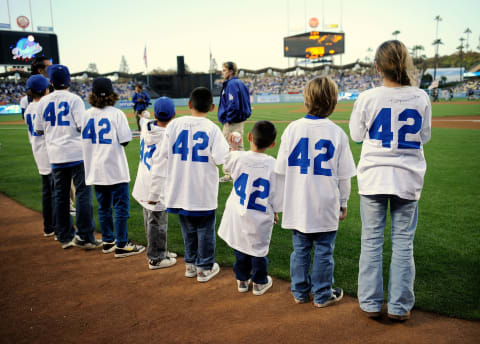
Dodgers Rookie of the Year #1
- 2B Jackie Robinson, 1947
- 10 seasons with Dodgers
- .311/.409/.474, 135 wRC+, 5802 PA
- 57.2 fWAR, 61.5 bWAR
Jackie Robinson was the first Dodgers Rookie of the Year and the first official Rookie of the Year in baseball history. He also had the best career of any Dodgers Rookies of the Year and is right there with Babe Ruth as one of the two most influential players in the history of the game. Ruth changed the way the game was played. Robinson changed the demographics of the game.
More from Call to the Pen
- Philadelphia Phillies, ready for a stretch run, bomb St. Louis Cardinals
- Philadelphia Phillies: The 4 players on the franchise’s Mount Rushmore
- Boston Red Sox fans should be upset over Mookie Betts’ comment
- Analyzing the Boston Red Sox trade for Dave Henderson and Spike Owen
- 2023 MLB postseason likely to have a strange look without Yankees, Red Sox, Cardinals
On the diamond, Robinson was an intense player who excelled at many aspects of the game. He was sure-handed in the field and could hit for average and power, run the bases well, and drop down a bunt or direct a hit-and-run ground ball to the right spot when needed. He did all this despite battling ugly racist attacks from fans and opposing players.
Robinson was so much more than his statistics, but his statistics are impressive. A good rule of thumb for the WAR scale puts a 4-5 WAR season as All-Star worthy. Robinson reached that level in seven of his 10 seasons.
A 5-6 WAR season is a superstar. Half of Robinson’s 10 seasons were at that level. A season worth 6 or more WAR is an MVP-caliber season. Robinson also had five of those, including two seasons worth more than 9 WAR (think Mike Trout-type seasons).
He achieved all this despite not making his major league debut until he was 28 years old. In a non-segregated, non-war era, Robinson likely would have been in the big leagues four or five years sooner. Not only would he have played more years at the beginning of his career, he could have played longer than he did.
In his final year in 1956, he hit .275/.382/.412 and was worth 4.2 WAR, despite starting to feel the effects of diabetes. In a different era, his diabetes would have been more easily controlled.
Next: 25 Most Memorable MLB Postseason Moments
Of course, Robinson came along at just the right time. He paved the way for all of the great African-American players who came after him. He did so by being a terrific player on the field and proud and dignified man off the field. He once assessed his career by saying, “I’m not concerned with your liking or disliking me . . . all I ask is that you respect me as a human being.”